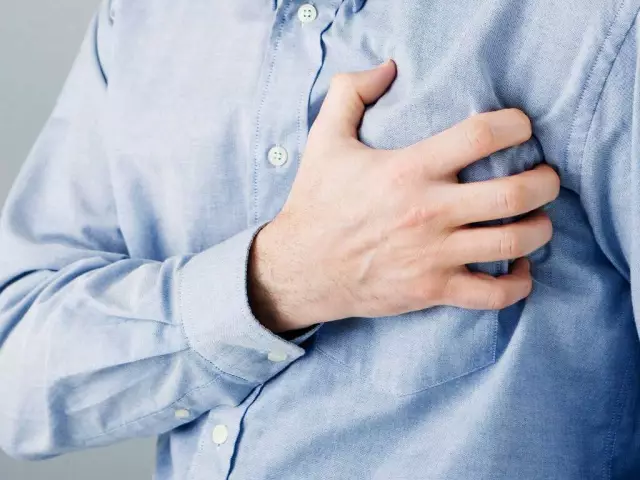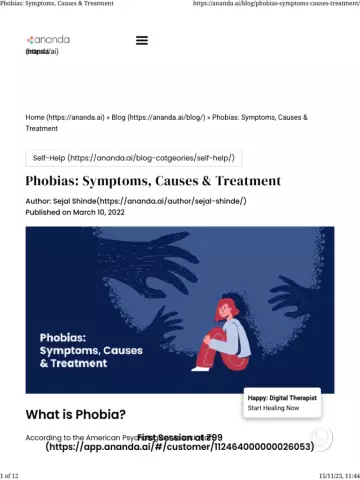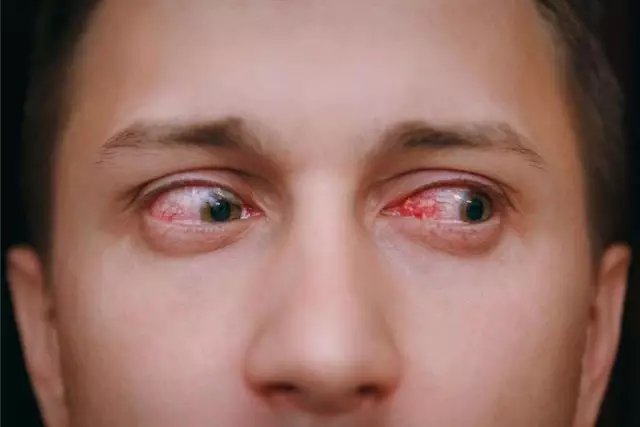- Author Rachel Wainwright [email protected].
- Public 2023-12-15 07:39.
- Last modified 2025-11-02 20:14.
Pleurisy

The lower respiratory tract is covered with a protective membrane called the pleura. In cases where it is affected by the inflammatory process, pleurisy develops. Normally, the surface of the pleural sheets is shiny and slippery. During illness, it becomes sticky and ceases to fulfill its protective functions. Viruses, bacteria and various allergens can provoke the development of pleurisy.
Sometimes pleurisy is an independent disease, but most often the disease develops in response to existing inflammatory processes in the lungs, tumors of various etiologies, or injuries. As a rule, the joined pleurisy aggravates the course of the disease, which means it contributes to the deterioration of the patient's condition. Hypothermia, stressful situations, overwork, drug intolerance, and malnutrition are favorable conditions for the development of pleurisy.
Regardless of what triggered the development of pleurisy, metabolism and the respiratory process are disrupted in the human body.
Forms and types of pleurisy
Depending on the presence or absence of fluid, fibrinous (dry) and effusion (exudative) pleurisy are distinguished.
With dry pleurisy, there is no fluid in the pleura; fibrin appears on its surface. Basically, this form of pleurisy precedes the development of exudative. Dry pleurisy is often a secondary disease in many diseases of the lower respiratory tract and intrathoracic lymph nodes, malignant neoplasms, rheumatism, collagenosis, and some viral infections.
Exudative pleurisy is characterized by the presence of fluid in the pleural cavity. By its nature, serous-fibrinous, purulent, hemorrhagic, chylous or mixed pleurisy is distinguished. The resulting fluid of unclear or non-inflammatory origin is called effusion.
Specialists distinguish another form of the disease, in which purulent contents accumulate in the pleural cavity. In this case, they speak of purulent pleurisy.
Often, in severe cases or in the absence of proper treatment, one form of the disease can be replaced by another.
Depending on the reasons that caused the inflammation, pleurisy is divided into aseptic (the disease develops as a result of injury or a malignant tumor of the lung) and infectious (the causative agent is pathogens).
Exudative and purulent forms of pleurisy can be complicated by pneumothorax, in which air penetrates into the pleural cavity. This condition requires immediate medical attention in a hospital setting.
Pleurisy symptoms

Common symptoms for all forms of pleurisy are chest pain, aggravated by deep breathing, talking or coughing, shortness of breath, malaise, obsessive cough, weakness, fever, forced position of the body.
With dry pleurisy, these symptoms are joined by a rubbing noise of the pleura while listening with a phonendoscope. With an uncomplicated course of the disease, recovery occurs on average after 7-10 days.
Exudative pleurisy is characterized by the appearance of a feeling of heaviness in the half of the body where there is an inflammatory process, cyanosis of the nasolabial triangle and swelling of the cervical veins. The patient's condition is more severe, signs of intoxication are more pronounced. Depending on the causes of pleurisy, the duration of the disease is from one to two months.
To the above symptoms of pleurisy in a purulent form, the following are added: an increase in temperature to significant numbers, a decrease in appetite, the skin becomes an earthy yellow hue, intoxication is growing, and bad breath is noted. Treatment, as well as subsequent rehabilitation, takes a long time.
Tuberculous pleurisy
Recently, the incidence of tuberculous pleurisy has increased, which occurs in all forms: fibrous, exudative and purulent.
In almost half of cases, the presence of dry pleurisy indicates that a tuberculous process is taking place in the body in a latent form. By itself, pleural tuberculosis is quite rare, for the most part fibrous pleurisy is a response to tuberculosis of the lymph nodes or lungs.
Tuberculous pleurisy, depending on the course of the disease and its characteristics, is divided into three types: perifocal, allergic and actually pleural tuberculosis.
The perifocal form of tuberculous pleurisy develops over the lesion, when the inflammatory process also covers the area of the pleura. Pleurisy can be both fibrous and exudative, the amount of fluid is different. The causative agents of tuberculosis in the effusion with this form are practically not sown. Treatment is long, relapses often occur.
Allergic pleurisy is a response to the multiplication of Mycobacterium tuberculosis in the human body. The course of the disease is acute, a significant amount of exudate accumulates in the pleural cavity. Resorption of the fluid occurs within three to four weeks.
Symptoms of pleurisy in tuberculous lesions are similar to those that appear with inflammation of the pleura of a different etiology.
Pleurisy treatment

Treatment for any form of pleurisy must be comprehensive. First of all, it is necessary to direct efforts to eliminate the main inflammatory process, which served as the starting point for the onset of this disease. Treatment for pleurisy is carried out in several directions: pain relief, acceleration of effusion resorption, prevention of complications.
The patient is prescribed analgesics, anti-inflammatory drugs, antibiotics, remedies to combat cough and allergic manifestations. With tuberculous pleurisy, specific therapy with anti-tuberculosis drugs is carried out. With pleurisy, resulting from a tumor of the lung or intrathoracic lymph nodes, chemotherapy is prescribed. Glucocorticosteroids are used for collagen disorders.
With a large amount of fluid in the pleural cavity, puncture is indicated in order to suck out the contents and inject drugs directly into the cavity.
During the rehabilitation period, breathing exercises, physiotherapeutic treatment, and general strengthening therapy are prescribed.
Prevention of pleurisy
The main emphasis in the prevention of pleurisy is on hardening, good nutrition, and maintaining a healthy lifestyle. Also, experts recommend promptly seeking treatment for diseases of the respiratory system, kidneys, cardiovascular system.
YouTube video related to the article:
The information is generalized and provided for informational purposes only. At the first sign of illness, see your doctor. Self-medication is hazardous to health!






